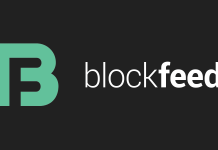Interview with Chris Lovell founder of Helium
What is the mission of Helium?
The mission of Helium is in part to take hold of BaaS and create a useful environment for both individuals and businesses.
With the Helium blockchain users will be able to run their own Masternodes and generate
passive income as we see with Dash and many other blockchains today.
The Helium network will also introduce the concept of Servicenodes to the blockchain sector.
Servicenodes will create an opportunity where anyone can run a blockchain node for anyone else, with priority connectivity and resource utilization which are rated and set at market determined price levels similar to managed cloud hosting products.
Servicenodes will provide an essentially endless amount of utility based on the services being provided by the Servicenode hosts/owners and the buyers on the market paying for their services. This also incentivizes Servicenode providers to develop and create more useful and practical applications of their nodes to compete in the market.
Comment: Servicenodes can be thought of as masternodes.
What are the technical requirements to host such nodes?
Technical requirements for Masternodes are similar to other blockchain projects. Masternodes require a negligent amount of resources to host, but will require 1,000HLM as collateral to operate. Servicesnodes are slightly trickier to pin down. Depending on the service being provided by a specific Servicenode and its customer, hardware requirements could range from the most basic of VPS to very robust physical servers networks.
What kind of coins/tokens will Helium use and why?
Helium is it’s own blockchain – it is not an ERC20 token on the Ethereum network and because of this, is not reliant on any other blockchain for its function.
How will these coins be created?
Much of Helium’s initial distribution is through an airdrop for Spreadcoin holders. At this time the snapshot of the Spreadcoin blockchain has already occurred. The snapshot amount due to Spreadcoin holders will be created by the Helium team and distributed to all users who participated in the snapshot. As for actual coin generation – users will be able to mine Helium (x11 algorithm), generate it passively running a Masternode, or generate Helium by hosting their own Servicenode.
How many of these coins will exist at launch?
Initial coin supply will be under 10 million HLM which includes all snapshot coins, with a 7%
per year block release.
Will more of these coins be created after launch?
As mentioned above, users will be able to mine Helium using the x11 algorithm, generate is passively running a Masternode with 1,000HLM as collateral for the node, or earn Helium by running Servicenodes for those seeking their service.
What is the estimated date for the project to be launched?
That is an excellent question! We’ve been working hard to get the network launched by the end of 2017. As far as an exact date, I can’t really specify. The Helium team is committed to launching a polished, functional blockchain. We have some large updates coming soon to our website and Bitcointalk Announcement thread among other channels.
Does the Helium testnet already exist?
Yes, the testnet is functioning, however, we have yet to publicly release the testnet or the mainnet.
For more information please visit :
We thank Chris Lovell for the interview.










